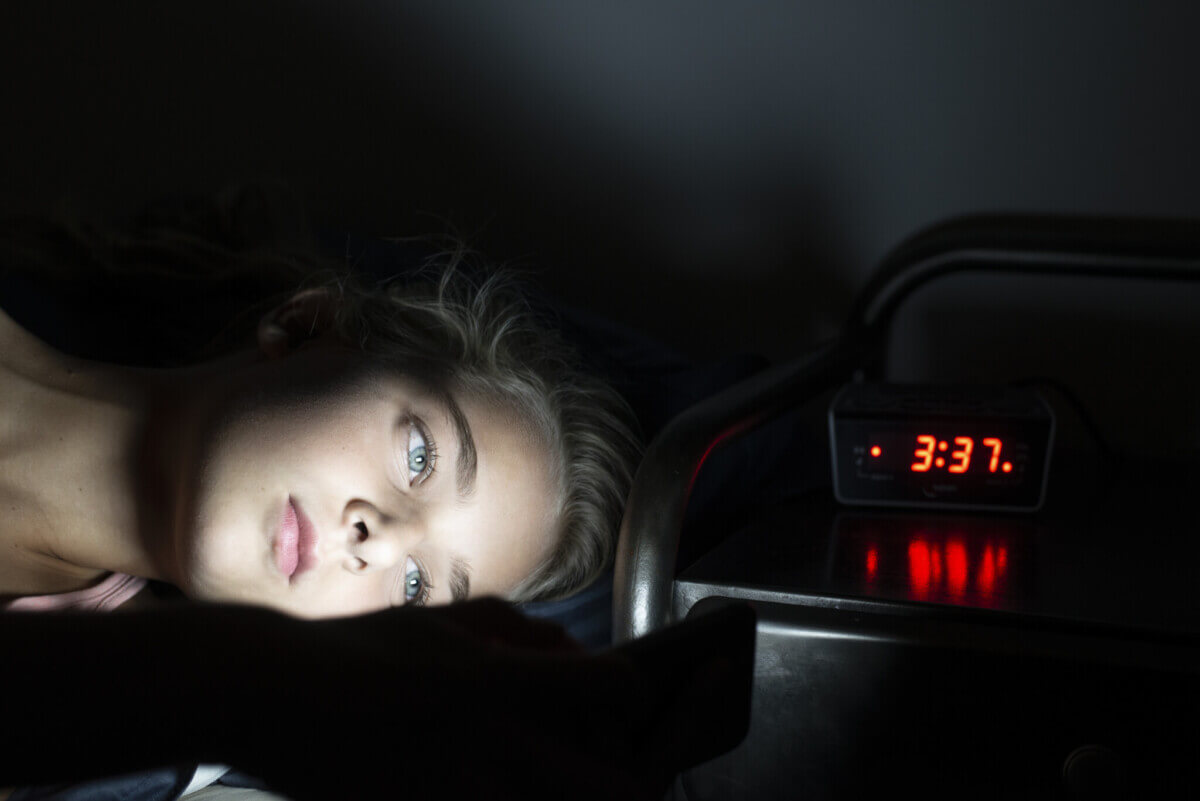
Poor sleep habits can have lasting impacts on the teenage brain. (© patrick - stock.adobe.com)
In a nutshell
- Teens fall into three distinct sleep “biotypes,” and those who go to bed earlier and sleep longer (Biotype 3) consistently show stronger cognitive performance and healthier brain development compared to their peers.
- Poor sleep habits, like staying up late and getting less sleep, are linked to weaker brain connectivity, smaller brain volumes, and lower cognitive scores, with these differences persisting across early adolescence.
- Establishing healthier sleep routines during early adolescence may have long-lasting impacts on brain growth and cognitive abilities, highlighting the critical role sleep plays in teenage development.
SHANGHAI — Early to bed, early to rise makes teenagers… smarter? New international research using Fitbit data from thousands of teens has revealed that adolescents with earlier bedtimes and longer sleep duration consistently outperform their night-owl peers on cognitive tests. Brain scans show sleep patterns during these formative years can shape a teen’s brain for years to come.
A massive study published in Cell Reports analyzed the sleep habits of over 3,200 adolescents using wearable Fitbit devices, finding that sleep patterns fall into three distinct “biotypes” that correlate with different brain structures and cognitive abilities. These differences persist throughout early adolescence, suggesting that early sleep habits could have lasting impacts on teen brain development.
Three Sleep Patterns with Different Brain Signatures
The researchers emphasize that sleep plays a vital role in human survival, brain development, and maintaining cognitive functions. They note that adolescence is a particularly critical period when sleep patterns undergo significant changes, including shorter sleep duration, later bedtimes, and shifts in circadian rhythm.
Unlike previous research that relied on self-reported sleep data, which teens, like many of us, aren’t always honest about, this study used objective measurements from Fitbit devices worn by participants in the Adolescent Brain Cognitive Development (ABCD) study.

The researchers identified three distinct sleep patterns among adolescents. “Biotype 1” teens had the shortest sleep duration, latest bedtime and sleep onset, earliest wake-up time, and highest heart rate during sleep. “Biotype 3” represented the opposite end of the spectrum with the longest sleep duration, earliest bedtime and sleep onset, and lowest heart rate during sleep. “Biotype 2” fell in between these extremes.
How Sleep Patterns Affect Teen Brain Structure
These differences weren’t just about sleep. When researchers examined cognitive performance, they found a consistent pattern: Biotype 3 teens (those with earlier bedtimes and longer sleep) consistently showed better cognitive performance than Biotype 1 teens (late-to-bed, early-to-rise, shorter sleep). These cognitive advantages persisted when the researchers tracked the same teens over time from ages 9 to 14.
Brain scans showed that teens who stayed up later and slept less (Biotype 1) had weaker connections between key brain areas. They also had smaller brain volumes, especially in parts of the brain important for memory, like the hippocampus. Teens with higher heart rates during sleep and less light sleep showed these same patterns.
The researchers followed adolescents from ages 9-10 through age 14, finding that the brain and cognitive differences between the three biotypes remained consistent over time. This suggests that the effects of sleep patterns on brain development aren’t temporary but may shape cognitive trajectories throughout adolescence. Establishing healthy sleep habits early in adolescence may support better brain development and cognitive performance throughout the teenage years.

For parents struggling with teenagers’ sleep habits, earlier bedtimes and longer sleep duration aren’t just about making mornings less chaotic; they may be crucial for optimal brain development and cognitive performance during these formative years. Now, enforcing earlier bedtimes has research to prove it.
Your teenager’s sleep habits today may shape their cognitive abilities tomorrow. Ensuring healthy sleep appears to be one of the most powerful tools for setting teens up for success.
Paper Summary
Methodology
The researchers analyzed data from 3,222 adolescents in the Adolescent Brain Cognitive Development (ABCD) study, using objective sleep data collected via Fitbit wristbands over a three-week period. They included 18 digital sleep measurements covering factors like sleep duration, sleep stages, heart rate during sleep, bedtime, and wake time. The researchers paired this sleep data with brain imaging data, including brain volume measurements and functional connectivity between different brain regions. They applied statistical techniques including sparse canonical correlation analysis (sCCA) to identify relationships between sleep characteristics and brain measures, and hierarchical clustering to identify distinct sleep-brain “biotypes.” The researchers also examined cognitive performance and followed participants longitudinally from ages 9-10 to 13-14 to track changes over time.
Results
The study identified two key dimensions linking sleep and brain characteristics. The first dimension connected later sleep onset and shorter duration with decreased connectivity between subcortical and cortical brain regions. The second dimension linked higher heart rate and shorter light sleep with lower brain volumes and connectivity. Using these sleep-brain relationships, researchers identified three distinct biotypes of adolescents: Biotype 1 had delayed, shorter sleep with higher heart rate; Biotype 3 had earlier, longer sleep with lower heart rate; and Biotype 2 fell in between. These biotypes showed differences in cognitive performance, with Biotype 3 showing the best performance in measures like crystallized intelligence, picture vocabulary, and reading recognition. Critically, these differences persisted through early adolescence, with Biotype 3 maintaining cognitive advantages from ages 9 through 14.
Limitations
While the study uses objective sleep measurements rather than self-reported data, which addresses limitations of previous research, there are still some important constraints. Not all possible sleep measures were included (such as sleep regularity), so the picture of individual sleep patterns may be incomplete. The brain networks analyzed were based on adult network topology, which may not fully represent adolescent brain networks, potentially affecting the results. Additionally, the study didn’t incorporate genetic data, which could help explain some of the observed relationships between sleep patterns and brain development.
Funding and Disclosures
The research was funded by grants from the National Key R&D Program of China and the National Natural Science Foundation of China. No competing interests were declared by the authors.
Publication Information
The paper “Neural correlates of device-based sleep characteristics in adolescents” by Qing Ma, Barbara J. Sahakian, Bei Zhang, and colleagues was published in Cell Reports on May 27, 2025. The study used data from the Adolescent Brain Cognitive Development (ABCD) study, a large-scale longitudinal study tracking brain development in children across the United States.







